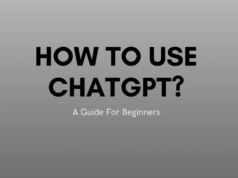How does GPT (Generative Pre-trained Transformer) transform the way we interact with artificial intelligence in the realm of PAA (Passage-level Question Answering)
The Power of GPT: Revolutionizing the Way We Interact with Artificial Intelligence

The field of Artificial Intelligence (AI) has seen tremendous advancements in recent years, and one of the most notable breakthroughs has been the development of the Generative Pre-trained Transformer (GPT). GPT is an advanced deep learning model that has revolutionized the way we interact with AI systems.
Understanding GPT
At its core, GPT is a language model that uses deep neural networks to improve the generation of human-like text. Built upon the Transformer architecture, GPT is designed to predict the next word in a sentence, given the previous context. It has been trained on vast amounts of text data from the internet and can generate coherent and contextually relevant responses.

Applications of GPT
The applications of GPT are diverse and have had a significant impact in various fields. One of the most prominent applications is in natural language processing tasks such as text generation, summarization, and translation. GPT can now generate human-like text with a high degree of accuracy, allowing for more engaging and realistic interactions with chatbots, virtual assistants, and other AI systems.
“GPT has elevated the capabilities of AI systems, making them more human-like and capable of understanding complex language nuances.”
Another key application of GPT is in content creation. With its ability to generate coherent text, GPT can aid writers, journalists, and content creators by suggesting ideas, completing sentences, or even drafting entire articles. This not only enhances productivity but also sparks creativity by providing alternative perspectives and novel insights.
The Future of Interacting with AI
GPT and similar advanced language models are paving the way for a future where interacting with AI feels more natural and seamless. Gone are the days of rigid question-and-answer exchanges or limited responses. GPT’s ability to understand context, produce accurate textual output, and mimic human-like conversation is closing the gap between AI and human interaction.
As GPT continues to evolve, it holds the potential to revolutionize industries such as customer service, education, and entertainment. Imagine conversing with a customer service chatbot that understands your problems precisely and offers personalized solutions. With GPT, this future is becoming a reality.
Conclusion
GPT has revolutionized the way we interact with artificial intelligence by enhancing its ability to generate coherent and human-like text. Its applications in natural language processing and content creation have opened up new possibilities and improved productivity in various fields. As GPT and similar models continue to advance, we can expect a future where AI seamlessly integrates into our lives, making interactions more natural and meaningful.










